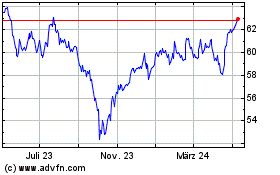By Pamela Newkirk
When my book "Diversity, Inc.: The Failed Promise of a
Billion-Dollar Business" was published a year ago, I couldn't have
imagined how much events during the summer of 2020 could advance
our national conversation on race. Where before the killing of
George Floyd a large segment of white America believed that the
nation had largely overcome racial barriers -- indeed, many
insisted the nation was postrace -- there now is growing
recognition of the extent to which race continues to pervert our
national ideals. The kind of policing so graphically illustrated in
Mr. Floyd's open-air killing has pried open the eyes of many to
stark racial disparities that extend to health, housing, education
and employment.
Not only are African-Americans far more likely than whites to be
viewed as suspects, or contract and die of the coronavirus, they
have just one-tenth of the wealth of white families. And they --
along with nonwhite Hispanics -- are also disproportionately
underrepresented in every influential field, including law,
fashion, film, publishing, college and university faculties, and
corporate boards.
The question now is how to move forward to realize a more
racially just society. How can we as a nation capitalize on this
rare moment of racial reckoning, which comes in the wake of a
contentious election and amid uncertainty about our economy,
environment and public health?
In "Diversity, Inc." I question why, despite five decades of
deliberations, hand-wringing and billions devoted each year to
diversity initiatives, racial minorities remain disproportionately
and acutely underrepresented in most influential fields. And why is
the diversity business thriving -- fueled by the hiring of chief
diversity officers and consultants and the implementation of
antibias training and climate surveys -- while racial diversity is
not? History, after all, can steer us away from decades of costly
tried-and-failed practices.
In recent years, a number of extensive studies have shown that
not only has diversity training failed to realize diversity, but in
some instances can make matters worse. A 2016 study by sociology
professors Frank Dobbin of Harvard University and Alexandra Kalev
of Tel Aviv University found that mandatory antibias training not
only stoked a backlash, particularly among white men, but five
years after implementation, the number of Black female and Asian
male and female managers, on average, decreased.
Yet many institutions continue pouring millions of dollars into
a bloated and largely futile diversity apparatus, while bypassing
far more efficient and efficacious models. Habit and protection
from legal liability might help explain why. Research by University
of California, Berkeley, Prof. Lauren B. Edelman, for example,
found that in federal civil-rights cases, judges base company
compliance on the mere presence of diversity policies, programs or
officers, rather than on their efficacy.
To actually move the needle on diversity, institutions can begin
by redirecting their efforts away from programs designed to change
hearts and minds, and toward proactive interventions.
For starters, institutions need to expand their outreach beyond
well-worn pipelines that perpetuate exclusionary hiring, to
institutions and professional organizations of color that many of
them habitually overlook. Because of the segregated nature of our
society and the reality of homogenous professional workplaces, the
grapevine -- intentionally or not -- often sustains homogeneity.
Exclusion begets exclusion, and the cycle can only be broken by
discarding dated arguments about a pipeline problem and tapping
into unfamiliar networks. Only then will institutions discover the
legions of professionals of color, including many who graduate from
some of the nation's top schools. Companies can begin by forming
bridges with graduate schools and professional organizations of
color that could shore up diverse candidate pools.
Another often overlooked strategy is mentoring, which can do
more to ensure the success of current employees and future
prospective candidates of color than canned diversity programs have
been shown to do. However, in talks at a number of companies, I've
been struck by the unease many white professionals feel toward
their colleagues of color. This discomfort, born of segregated
neighborhoods and social spheres, along with prevailing stereotypes
that taint their judgment of Black and brown people, is perhaps
inevitable. But unless institutions build mentoring into the
development of employees -- including those of color -- diversity
is unlikely to flourish.
Large institutions also can adopt the kind of system of
assessment and accountability that was instituted at Coca-Cola Co.
following a landmark discrimination lawsuit settlement in 2000.
Steve Bucherati, who had been working in global marketing when he
was asked to oversee the company's diversity efforts, developed and
oversaw a system to assess and disrupt patterns of racial
disparities in pay, promotion and opportunity.
He began by assessing the status of candidate pools and employee
positions, pay, bonuses, promotions and work evaluations along
racial lines to detect and disrupt any patterns of bias. The system
allowed the company to address, in real time, any instances of
racial inequity before final decisions related to hiring,
promotions, salaries, bonuses and the like were made. Transparent
metrics, committed leadership and a system of accountability
enabled the company to significantly increase its diversity,
including in management, over a five-year period. Despite the
progress made after the settlement, Coca-Cola acknowledged more
recently that it still faces diversity challenges. Chief Executive
James Quincy told employees in a June town hall that while
African-Americans make up 19% of the company's U.S. workforce, they
hold only 7% of senior leadership positions. "We need to be more
effective in making progress," he said. The acknowledgment
underscores the need for ongoing vigilance.
Not even the best efforts will succeed without buy-in from the
board and CEO, and sufficient support of those entrusted to deploy
a diversity strategy. Tellingly, a 2019 Russell Reynolds survey of
Fortune 500 chief diversity officers showed that only 35% had
access to the company metrics that would even allow them to assess
the problems, and many said they didn't have the support or
resources needed to succeed. So while in the wake of Mr. Floyd's
killing many corporate CEOs have asserted that "Black Lives
Matter," they can best demonstrate their commitment by taking the
lead on one of the critical issues of our day.
Dr. Newkirk is a journalist, a professor at New York University
and an author of several books, including "Diversity, Inc.: The
Fight for Racial Equality in the Workplace." She can be reached at
reports@wsj.com.
(END) Dow Jones Newswires
December 14, 2020 11:14 ET (16:14 GMT)
Copyright (c) 2020 Dow Jones & Company, Inc.
Coca Cola (NYSE:KO)
Historical Stock Chart
Von Mär 2024 bis Apr 2024

Coca Cola (NYSE:KO)
Historical Stock Chart
Von Apr 2023 bis Apr 2024
